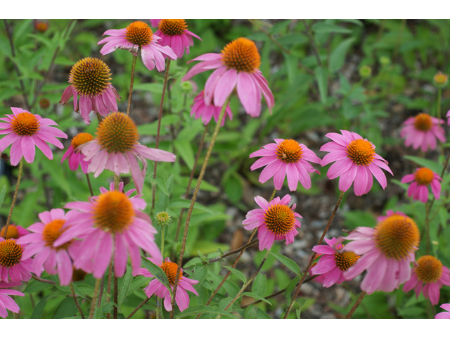Purple Coneflower

This beautiful plant is a native of the Kansas prairies and can often be seen blooming throughout pastures, in roadside ditches, in rocky areas and as a perennial flower in yards. A member of the sunflower family it goes by the name Echinacea angustifolia. Echinacea is Greek for “hedgehog” which is in reference to the spiny centers of the flowers. The native plants bloom in mainly in June and July with purple to pale purple flowers with an orange/brown spiky center. After blooming the petals will fall off and the seed heads remain on the plant. Goldfinches are attracted the seed heads and can often be seen eating on them during the winter if they are left to stand. There are a wide variety of cultivated varieties that come in different sizes, shapes, and colors of blooms. Some of the new cultivars are not as beneficial for pollinators, especially the ones that lack the orange/brown centers. Purple coneflower is highly adaptable to our area and is very tolerant of heat, drought, humidity, and poor soils. The roots of this plant can extend up to 8’ in the ground which allows it to survive prolonged periods without rain. Native Americans would use the roots of purple coneflower to treat toothaches, sore throats, mumps, wounds and burns due to the pain reducing compounds they contained.

Have questions? Contact our office where our Horticulture Extension Agent will assist you with questions.
Phone: (316) 321-9660
Email: callae@ksu.edu